12 most disgusting dishes you can try
A Life / / January 06, 2021
1. Surströmming
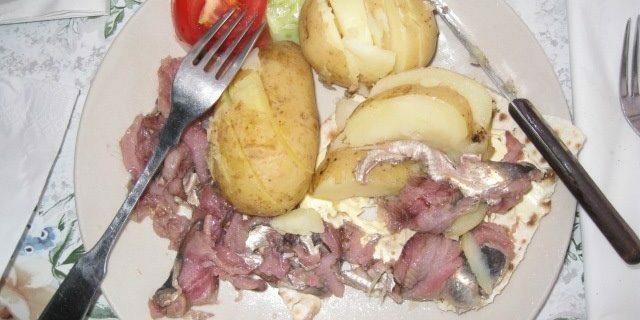
This dish was inventedEverything You Need to Know about Swedish Surströmming in Sweden under King Gustav I. He fought with the German city of Lubeck, and the war had a bad effect on the economy: the Swedes no longer had enough salt to harvest fish. As a result, the herring turned sour. And the starving people ate it for lack of something else.
Preparing surstroemming from the Baltic herring (Baltic herring). It is placed in a container with caustic brine (common salt solution), then transferred to a less salty liquid. Then they are rolled up in jars for several months so that hydrogen sulfide is released, and more.
Jars of fermented herring swell and must be opened with care. The stink of this delicacy is unbearable, and flies flock to it. Since 2006, some major airlines like Air France and British Airways have even bannedSwedish fermented herring dish considered safety risk on airlines carry surstroemming aboard their planes - after all, if the can explodes, then you will not get rid of the smell.
The aroma of rotting fish, according to eyewitnesses, simply knocks you off your feet.
Surströmming is eaten with bread, butter or goat cheese and potatoes. And this is accompanied by abundant libations: it seems that this is the only way to get rid of vomiting.
2. Balut
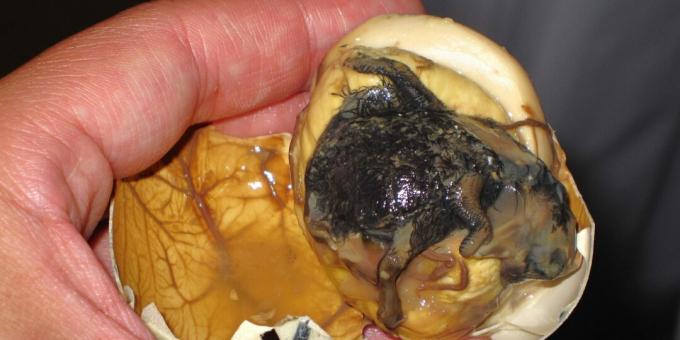
This dish is quite popular in the Philippines, as well as in Vietnam, Cambodia, Laos, Malaysia, Thailand and the southern provinces of China. This is a boiled duck egg, in which a chick with plumage has already formed.
When they eat balut, they first drink the amniotic fluid, and then sprinkle the chick with black pepper and salt and absorb it along with the bones, beak and feather buds. They say that amniotic fluid has a positive effect on potency, and the taste of balut resembles boiled beef liver.
3. "Centenary" egg

Another dish that the Chinese came up with when they felt sorry for throwing away rotten eggs. Duck, chicken or quail eggs are kept in a special mixture of tea, lime, salt, ash and clay. Then they are placed in rice husks and straw and buried in the ground.
Eggs dug out after 3-4 months smell very strongly of ammonia. The protein becomes elastic and translucent and turns dark brown. The yolk becomes creamy, dark in color - from gray to black with a greenish tint.
If "centenary" eggs are left in the coating, they can be stored for several years. But, really, not 100.
Due to the frozen crystals of substances released from the egg, on its surface patterns are formedresembling rime. Therefore, the Chinese also call this dish "pine eggs" or "pine needle eggs".
4. Tongzidan
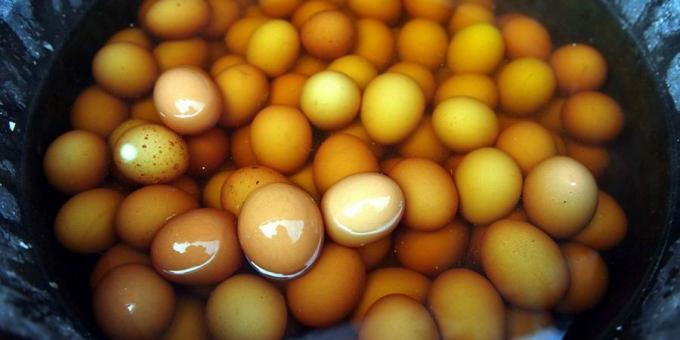
From Chinese this word is translated "boy's egg". Don't worry, this is not what you thought. But also an impressive dish.
It is prepared simply: chicken eggs are boiled in urine a male child who has not reached puberty. After the liquid boils, the egg shell is pierced so that the urine gets inside. Cooking lasts all day, when boiling, urine is added. When the shell is cracked, the tujdan is ready. It tastes salty.
To collect urine from boys under 10 years old, special buckets are left in schools in Zhejiang province. Only healthy children can urinate there.
They say the dish acts as an antipyretic and hemostatic agent, but there is no medical evidence for this.
5. Dead end heart
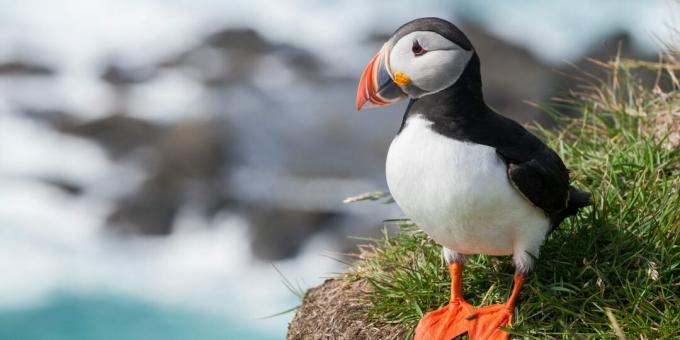
See this funny little bird? This is the Atlantic impasse. These cute creatures live in the north and are considered a delicacy by the people of Iceland. It would seem, what is strange about eating birds? People eat chickens. Or pigeons.
The catch is that heart removed from a live puffin and eaten raw. The remaining poultry can be thrown away or, if you feel sorry for it, boil, smoke, fry or cook in brine.
Such a delicacy, however, is rare, since puffins are included in the Red Data Book and in Norway and Iceland their fishing is limited. You can only hunt puffins in the Faroe Islands.
6. Haucarl
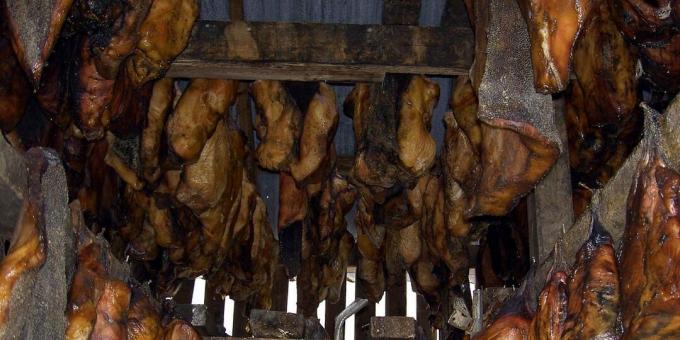
As you can see, Icelanders are tough guys who are used to eating everything that at least theoretically can be chewed. It's all to blame for the climate, which is not conducive to agriculture and animal husbandry.
For example, the northerners have adapted to eating sharks - the Greenlandic polar and giant. Raw meat is poisonous due to its high urea content, so in any other country they would only take fins from a shark for soup.
But the Icelanders were apparently sorry to throw out a whole shark. Therefore, they learned to dry it.
Shark fresh, cut into pieces and put the meat in a leaky trough with gravel so that the meat juice supersaturated with urea can flow out. Some do not sweat and simply bury them in the ground. After 6-8 weeks, the meat is removed and dried in the open air for 2-4 months until a crust forms.
When haukarl is served, the crust is cut off, and underneath it is revealed yellowed meat of such a consistency that it can be smeared on bread. It smells like urine.
7. Kopalchem
This aromatic (in the sense, strongly smelling) dish is preferred by the Nenets, Evenks, Chukchi, Eskimos and Inuit. There are several cooking options that differ for different nations.
The most common variant looks like this: the carcass of a fat deer is buried in a swamp, sprinkled with peat and sphangum moss. After a few months, they take it out and eat the rotten meat, cutting it into thin crowbars. That's all. A seal, walrus or whale is also sometimes used instead of a deer.
Cadaveric poison released during cooking can kill, but northern peoples have gotten used to it over the centuries evolution. However, if you do not belong to the Eskimo or Chukchi people with a genetic resistance to botulism, it is better not to consume kopalchem internally.
To get rid of the feeling of hunger, only its smell will be enough.
Other peoples are preparing their own versions of Kopalchem. For example, the Inuit shove as many seagulls as possible into the carcass of a seal and bury it in order for the birds to decompose in the intestines under the influence of digestive enzymes. After a few months, the seal is taken out, the birds are taken out of it and they are eaten, consuming their softened meat together with bones. It tastes like old cheese, but smells like rotten.
8. Swallow's nest
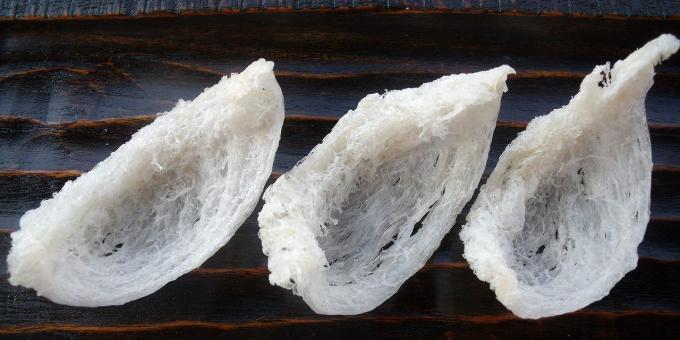
Surely, after reading the name of this recipe, you were surprised: how can you eat bird nests made from branches? Everything is fine. Swift birds, relatives of swifts, build their nests entirely from their own saliva, which freezes in the air. Then the inhabitants of Malaysia, and more specifically, the Kalimantan Islands, collect these nests and cook soup from them on a steam bath.
Indonesia supplies an average of 250–300 tonnes of nests per year. Malaysia - only 25 tons, but they are considered to be of higher quality.
Yang Woo soup is considered a delicacy in China, Vietnam and Malaysia. In consistency, it resembles jelly, in appearance - viscous mucus. But he is very rich protein and essential amino acids, so athletes should pay attention to this dish.
9. Smalakhove
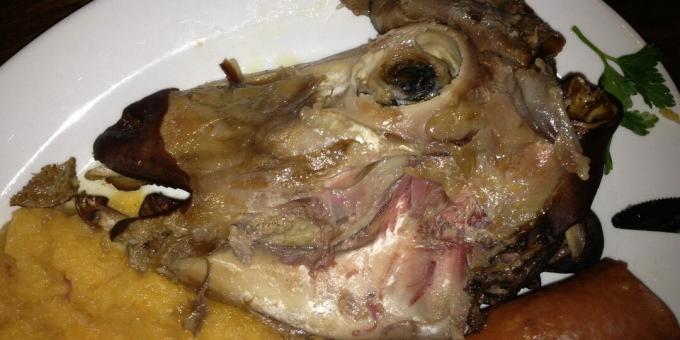
A West Norwegian dish made from lamb's head, served at Christmas. The head of the ram is burned, salted, smoked and dried. It is then boiled or steamed for three hours. The brain can be removed before cooking, or you can cook it right in the head, and then open the skull and eat from there with a spoon. They eat smalakhove with rutabagas or potatoes.
In addition, the Norwegians have a peculiar culture of eating this dishes. Usually half of the head is served, which is started from the ear and eye. Then eat in a circle from the front of the head to the back.
Initially, smalakhove was considered a dish for the poor. But now, in the village of Voss, in Norway, there is no end to tourists who want to try it.
10. A-ping
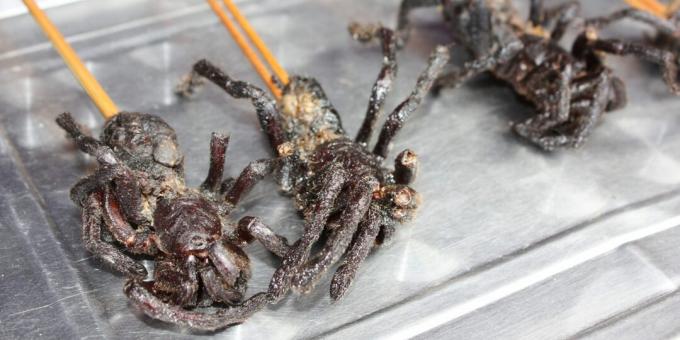
This is how tarantulas are called in Cambodia. They are bred en masse in villages near the city of Skuon in earthen pits. Huge spiders palm-sized - especially females, they are larger - fried in oil, strung on a stick and eaten. Wash down with local palm wine.
It is believed that spiders began to eat during the Khmer Rouge terror, when food was scarce. Now fried tarantulas are considered a delicacy. They say it tastes like a cross between chicken and dried cod.
11. Kopi-luwak

Kopi-luwak is one of the most expensive ($ 700 per kilogram) coffee varieties in the world. It is produced in Indonesia, the Philippines, South India and Vietnam.
The ripe fruits of the coffee tree are fed to the Malay palm marten (alternatively called musang). After the animal has defecated, the coffee beans are removed from the feces, dried in the sun and boiled. coffee as usual.
Under the influence of enzymes in the digestive tract of musang, coffee becomes less bitter and acquires a particularly piquant taste.
Black ivory or black ivory coffee is processed similarly. Only instead of musang a whole elephant is used. To make a kilogram of such coffee, you need to make an elephant eat 33 kilograms of fresh coffee berries. This dish is prepared in Thailand, a kilogram of grains costs $ 1,100.
12. Akutak

Akutak is an Eskimo ice cream made in Alaska and Northern Canada. Instead of cream, it uses the fat of a reindeer, elk, walrus or seal.
The fat is thoroughly ground and mixed with herbs and roots collected from the holes of vole mice. Add berries - cranberries, cloudberries, crowberry, blueberries or raspberries, - and sometimes raw salmon or deer. The resulting mixture is sweetened with sugar and mixed thoroughly. They are eaten cold.
Some people make Eskimo ice cream, replacing animal fat with vegetable fat. But such a dish definitely cannot be called a real akutak.
Read also🧐
- 20 strange dishes that users came up with in quarantine
- How to deal with nausea: 12 simple tips
- Snack in a shoe and soup in the sand: 18 examples of unusual food serving in restaurants



